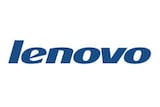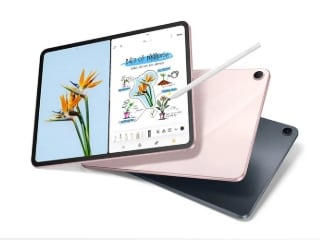
Founded in Beijing in 1984, Lenovo acquired IBM's PC business in 2005, and first became the world's top PC maker in 2013. It entered the Android and Windows tablet market in 2011, began selling Android smartphones in 2012, and acquired Motorola Mobility from Google in 2014. The company has also launched an online-only sub-brand for smartphones called Zuk in China.
-
 Lenovo Yoga Slim 7i Aura Edition
Lenovo Yoga Slim 7i Aura Edition
-
 Lenovo Yoga Pro 7i
Lenovo Yoga Pro 7i
-
 Lenovo Yoga Slim 7i Pro X (2022)
Lenovo Yoga Slim 7i Pro X (2022)
Lenovo Yoga Slim 7i Aura Edition Review
- Design
- Display
- Software
- Performance
- Battery Life
- Sound
- Value for Money
- Good
- Sturdy and premium design
- Bright display
- Snappy performance
- Good range of ports
- Long battery life
- Bad
- The touchpad could have been better
- Poor webcam
- Weight distribution could be better
The Lenovo Yoga series has long stood out as the premium ultra-portable laptops in the market. The company has been consistently launching laptops under its Yoga branding with a special focus on sleek design and lightweight build. And the new Lenovo Yoga Slim 7i Aura Edition continues this tradition. The latest laptop from Lenovo comes loaded with some interesting features, including the latest Intel Core Ultra processors, a 2.8K IPS touchscreen, a long battery life, and more. That said, is it enough to make it stand out from the crowd? I have been using the laptop for a while now, and here's everything you need to know.
Lenovo Yoga Pro 7i Review
- Design
- Display
- Software
- Performance
- Battery Life
- Graphics
- Value for Money
- Good
- Excellent high-resolution OLED panel
- Discrete graphics
- Good battery life
- Large trackpad and good keyboard
- Bad
- Speakers aren't very loud
- Glossy display
There are plenty of thin and light laptops available in the market these days, but most of them don't offer a dedicated GPU. Of course, you'll find some exceptions, such as the HP Omen Transcend 14 (Review) or the Asus ROG Zephyrus G14, but the options aren't too many. Cue the all-new Lenovo Yoga Pro 7i, which has been updated with the Intel Core Ultra CPUs and Nvidia GeForce RTX 40 series GPUs. You get an ultrabook-like design but enough power to run games and other creative tasks.
Lenovo Yoga Slim 7i Pro X (2022) Review
- Design
- Display
- Software
- Performance
- Battery Life
- Value for Money
- Good
- Premium build quality
- Sharp and vivid display, Dolby Vision support
- Very good performance
- Useful privacy features
- Decent battery life, quick charging
- Comfortable keyboard
- Bad
- Runs a bit warm (top-spec variant)
Lenovo's Yoga line of 2-in-1, convertible laptops is popular, but its Yoga S or Slim series is equally interesting. These laptops are designed to be slim and powerful, offering a mix of multimedia capabilities and raw performance for those who don't need a convertible design. The Lenovo Yoga Slim 7i Pro X sits at the top of the stack and while the name is quite a mouthful, it's designed for content creators and professionals who need calibrated hardware for their workflows. Let's get into all the details so you can decide if this should be your next laptop.
-
 Most Innovative and Unique Gadgets of 2025: Samsung Galaxy Z TriFold, iPhone Air and MoreWritten by Nithya P Nair, 14 October 2025
Most Innovative and Unique Gadgets of 2025: Samsung Galaxy Z TriFold, iPhone Air and MoreWritten by Nithya P Nair, 14 October 2025 -
 Best Tablets in India for Streaming: OnePlus Pad Go 2, Galaxy Tab S11 Ultra, MoreWritten by Nithya P Nair, 14 October 2025
Best Tablets in India for Streaming: OnePlus Pad Go 2, Galaxy Tab S11 Ultra, MoreWritten by Nithya P Nair, 14 October 2025 -
 Best Tablets for Students in India: Xiaomi Pad 7, Samsung Galaxy Tab S10 FE, MoreWritten by Nithya P Nair, 14 October 2025
Best Tablets for Students in India: Xiaomi Pad 7, Samsung Galaxy Tab S10 FE, MoreWritten by Nithya P Nair, 14 October 2025 -
 Best Thin and Light Laptops Under Rs. 1 Lakh in India: MacBook Air (M4), Samsung Galaxy Book 5, and MoreWritten by Dhruv Raghav, 14 October 2025
Best Thin and Light Laptops Under Rs. 1 Lakh in India: MacBook Air (M4), Samsung Galaxy Book 5, and MoreWritten by Dhruv Raghav, 14 October 2025 -
 Best Gaming Laptops Under Rs. 80,000 in India: Lenovo LOQ 15, Acer ALG, HP Victus and MoreWritten by Nithya P Nair, 14 October 2025
Best Gaming Laptops Under Rs. 80,000 in India: Lenovo LOQ 15, Acer ALG, HP Victus and MoreWritten by Nithya P Nair, 14 October 2025 -
 Best Tablets Under Rs 20,000 in India: OnePlus Pad Go, Moto Pad 60 Neo, Lenovo Idea Tab and MoreWritten by Sucharita Ganguly, 14 October 2025
Best Tablets Under Rs 20,000 in India: OnePlus Pad Go, Moto Pad 60 Neo, Lenovo Idea Tab and MoreWritten by Sucharita Ganguly, 14 October 2025
- Best Mobile Phones
- Best Camera Mobile Phones
- Best Mobile Phones Under 10000
- Best Mobile Phones Under 15000
- Best Mobile Phones Under 20000
- Best Mobile Phones Under 25000
- Best Mobile Phones Under 30000
- Best Mobile Phones Under 35000
- Best Mobile Phones Under 40000
- Mobile Phones between 10000 to 15000
- Best Camera Mobile Phones Under 15000
- Best Camera Mobile Phones Under 20000
- Best Camera Mobile Phones Under 25000
- Best Camera Mobile Phones Under 30000
- Best 5G Mobile Phones Under 15000
- Best 5G Mobile Phones Under 20000
- Best 5G Mobile Phones Under 25000
- Best 5G Mobile Phones Under 30000
- Best 5G Mobile Phones Under 40000
- Best 5G Mobile Phones Under 50000
- Samsung Galaxy Unpacked 2025
- ChatGPT
- Redmi Note 14 Pro+
- iPhone 16
- Apple Vision Pro
- Oneplus 12
- OnePlus Nord CE 3 Lite 5G
- iPhone 13
- Xiaomi 14 Pro
- Oppo Find N3
- Tecno Spark Go (2023)
- Realme V30
- Best Phones Under 25000
- Samsung Galaxy S24 Series
- Cryptocurrency
- iQoo 12
- Samsung Galaxy S24 Ultra
- Giottus
- Samsung Galaxy Z Flip 5
- Apple 'Scary Fast'
- Housefull 5
- GoPro Hero 12 Black Review
- Invincible Season 2
- JioGlass
- HD Ready TV
- Laptop Under 50000
- Smartwatch Under 10000
- Latest Mobile Phones
- Compare Phones
- Honor Win RT
- Honor Win
- Xiaomi 17 Ultra Leica Edition
- Xiaomi 17 Ultra
- Huawei Nova 15
- Huawei Nova 15 Pro
- Huawei Nova 15 Ultra
- OnePlus 15R
- Asus ProArt P16
- MacBook Pro 14-inch (M5, 2025)
- OPPO Pad Air 5
- Huawei MatePad 11.5 (2026)
- Xiaomi Watch 5
- Huawei Watch 10th Anniversary Edition
- Acerpure Nitro Z Series 100-inch QLED TV
- Samsung 43 Inch LED Ultra HD (4K) Smart TV (UA43UE81AFULXL)
- Asus ROG Ally
- Nintendo Switch Lite
- Haier 1.6 Ton 5 Star Inverter Split AC (HSU19G-MZAID5BN-INV)
- Haier 1.6 Ton 5 Star Inverter Split AC (HSU19G-MZAIM5BN-INV)







![[Sponsored] The Ultimate AI PC Challenge: Samsung vs HP vs Lenovo](https://c.ndtvimg.com/2025-05/lcmloh9o_laptop_160x120_24_May_25.jpg?downsize=260:*)



![[Sponsored] Technical Guruji Talks About Intel EVO Laptops and More](https://c.ndtvimg.com/2023-11/qj9ajtc_image_160x120_23_November_23.jpg?downsize=260:*)



































